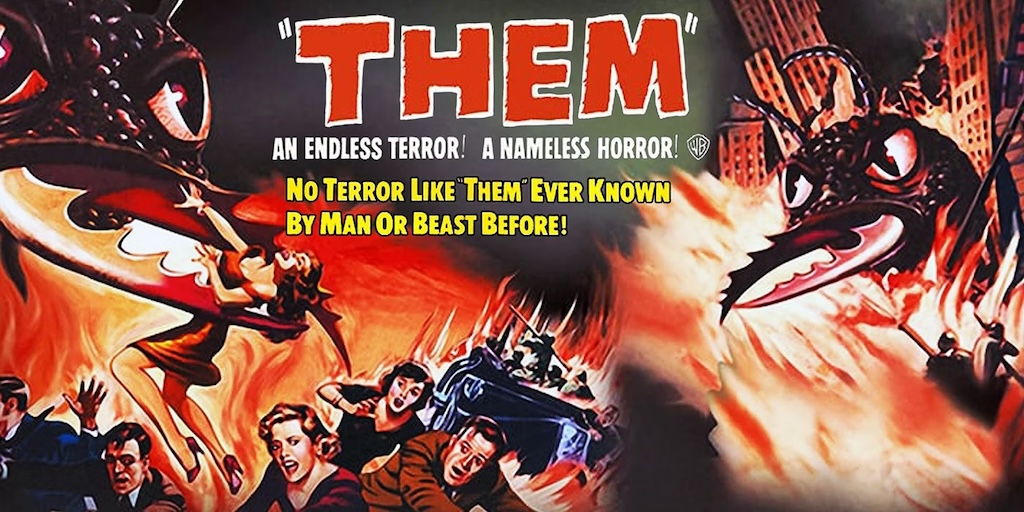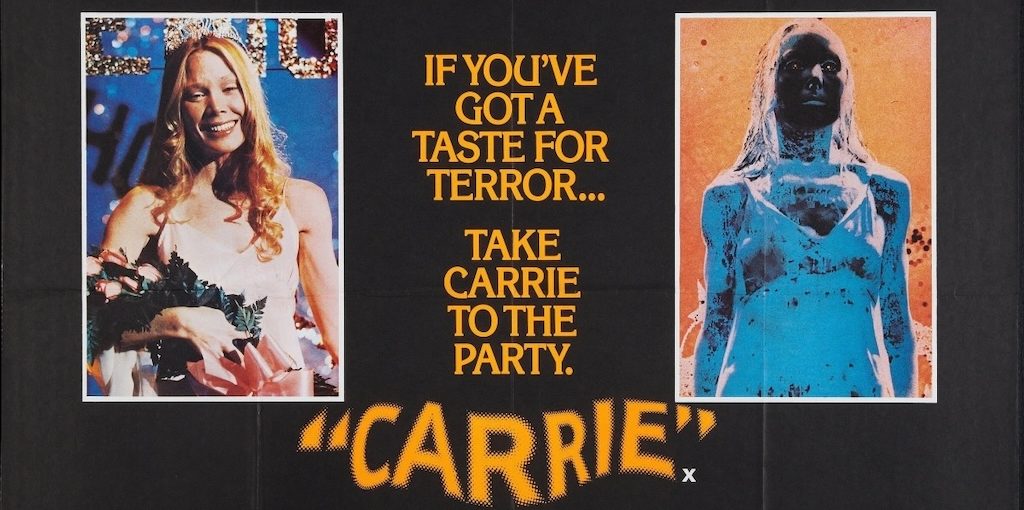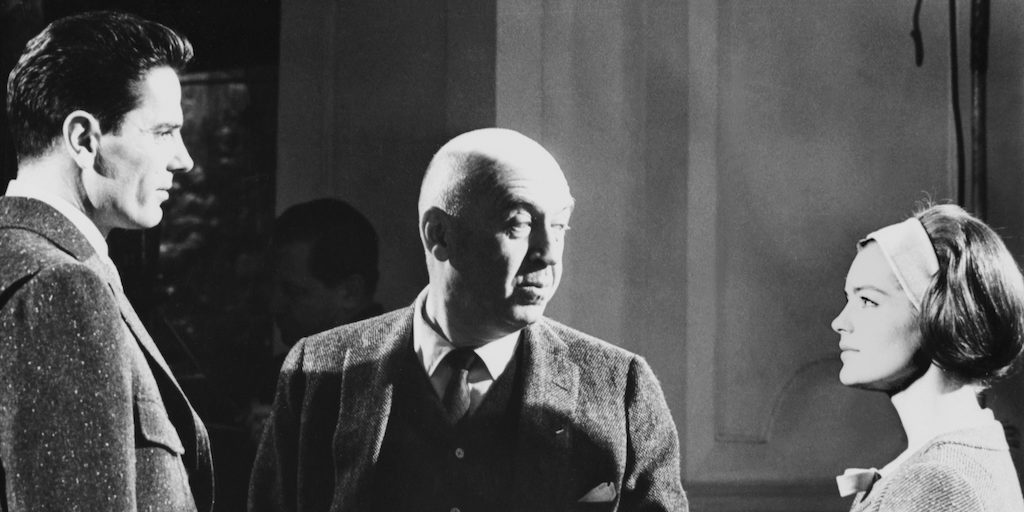Horror cinema became, or was forced to become by some enthusiasts not much endowed with a critical outlook, in a sort of form or way of expression more handled by the audience than by the film itself and even of its makers. It seeks to essay, or directly ramble, in biological terms rather than aesthetic ones; for example, how much “adrenaline” is provoked by this or that film.
Possibly we might see very soon that the cinema viewer will be connected to a simple and small apparatus ––possibly Chinese in its origin–– that would control, parallel to the projection of the film, the subtlest changes in his cerebral registry.
Of course that “horror” seems to be the last shelter of something as ancient as “cinephilia”. Something, which after determined films, going back four or more decades ago, would be compared to continue to collect stamps in Medici’s Florence. The anachronism is deliberate, just in case.
This more than retrograde attitude is also of a great political interest, not to mention of a theological interest. Let’s leave this point behind, since we have elaborated on such relationship. Even though, it wouldn’t hurt to insist on it from time to time.
It is obvious to anybody who has read our theoretical essays that the creation of a representation and presentation mode known as “horror” or “terror” was born accordingly to the articulation of something called “B-movies”
So, it was “B-movies” that aimed to trace and relocate certain themes and motifs even more controversial than those already put on the scene by the other cinema (“A”).
Classical Hollywood had among many other virtues that of being an excellent reader. And what is that, in a broad sense? To ignore the editorial and journalistic labels and categories. In this way, it did not “rescue”, but put in its true place authors such as Poe, Mary Shelley, Bram Stoker and a very fortunate etcetera.
But it not only read and understood its stylistic resources, but it went towards the mythical-poetical and in there found, wisely, its political-philosophical content, which strengthened even more the coining of that term to sustain, even more firmly, another vision of the world in a radical controversy with the liberal-protestant world.
Without expanding any further, it rediscovered the mythical and symbolical element referred to the sacred. Of course this was already on the lookout by T.S. Eliot in “The Waste Land”, by James Joyce in “Ulysses” and even before by Igor Stravinsky in “Le sacre du Printemps”.
Of course it did. But cinema by its concept of action, production and re-presentation, immediately achieved to have, accordingly to its production, a fitting audience, educated or reeducated in parallel by cinema. Obviously it didn’t have time for nonsense such as collectionism or trivia. Classical Hollywood acquired an audience with a vision symmetrical to the vision of filmmakers. Something lost since baroque politics. And something, above all, that was attempted and, in great measure, achieved to erase, cross out, even so degrade by liberalism, by seeking to reduce it to the tight circle of the “behind times”, the “obscure”, the “reactionary”, the “primitive”, the “childish” and, ––should the case arise–– the “popular”.
For that very reason Hollywood created this double-sensed form of production called “B-movies”. From such productions, was the fantasy genre the one that reached more immediately to audiences and, due to this wise binary understanding by classical Hollywood, made possible the privileged underlining in such mode of action and re-presentation..
This lasted and later continued until today in the possibility conditions of historical time and space. The major studios, led vertically by families and associates, disappeared (around 1965-68); which gave place to the self-consciousness of the early seventies. This led the Concept of Cinema to its absolute culmination, including “Fantasy B-movies” (Carpenter).
Of course, the Concept of Cinema has been attempted to be disfigured by inflation, the same way it happens with money, to devaluate representation. In this way, the excess in circulation of paper money makes its serialization to not represent the value of what is supposedly presenting. In such a way the inflationary production of the aesthetical plus, inherent to the human being and in permanent dispute with its biological-economical part, is attempted to be degraded in the same way paper money does.
For this inflation two things are needed. That the inconsequentiality of its means is immediately followed by the inconsequentiality of its ends.
Now it suffers the banalization and inflation of its production and its senses. And so it grows the poster, the chit-chat, the “it is said” and the “hunger for novelties”.
We went to The Guest (2014) with several hesitations. After almost being enraged by some pretentious bricks like Jordan Peele’s Get Out (2017), a stupidity that knows no boundaries, full of garbage, incoherent scenes when not fantasy-like, awful performances and with a racist content both factious and basic; although turned over: the bad guys here are all white because the director and his “hero” are black. In this he does nothing but follow in the nefarious footsteps of Spike Lee, another perpetrator of clumsy pamphlets with the same excuse.
But The Guest achieves everything it intends to do.
And that is to give antoher reading, starting from a diegesis with a Halloween motif at the center, of the emptying of every sense of what is sacred in a typical family, but one closest to The Simpsons than of any John Q. Public. It doesn’t do it to revisit a repeated sociological picture: suburban middle class, living with two sofas, TV and the ever growing kids; but one already stuck in their difference. That which the neutralizing idiocy would call “dysfunctional”. Of course to undramatize and neutralize, in a liberal-global manner, the biological time bomb at the verge of blowing up; if not already blown up and finding us living amidst the debris of the aftermath.
Halloween is its final goal, its dramatic core. But the director wisely dilates with small signals that we are nearing this “party”, until its full utilization and not just as a diegesis, but as mise-en-scene.
By this we mean that the basic problem was resolved, the alpha point in the Concept of Cinema since Griffith. How to make the diegesis, what is given, the point of departure, the composition of location ––both the real-natural, as well as the one recreated as a set design simulation–– be transmuted into mise-en-scene.
To be even more clear: How to make the chosen material environment, given beforehand, become ––without stop being that very material support–– a mundus, a particular space-time with its material signs turned simultaneously into another thing.
This principle of symmetry ––as we have called it–– is what makes cinema to be cinema and not vulgar and serialized undifferentiated products.
The Guest successfully goes across and resorts to the first symbolic axis and key to the fantasy imagination from ground zero: E.T.A. Hoffman’s “The Sandman” and Mary Shelley’s “Frankenstein”.
As the manifestations of that which is sacred, its different signs continue to be alive, acting or latent despite the reigning solidification. Naturally that it is also, and parallel to this, about going across the trajectory of how those signs and manifestations reappear, and come back ––for the same reason of its attempt or censorship––, in a hybrid form, ambiguous, sinister or directly abnormal.
All sustain of the fantasy imagination is based on this double relationship with that which is strange.
It is a double-sense knot tied from the ropes of the “the strange”, “the missing” and “the stranger” that in this film by Adam Wingard are perfectly knotted, without having the proper motifs and figures of this concept end tangling up the director. A thing that usually happens within that insane machinery that tirelessly produces films, books and comics claiming themselves to be “fantasy” when they are something else.
It is not a matter to multiply horrors through physical cruelties of all sorts. Or to move around puppets, gaudy faces and a mascarade full with viscosities and hemoglobin.
The solidity of a film like The Guest evolves, to begin with, from the effective employment of the mythologeme of the return, the coming back, “returning as a stranger”; masterfully employed in the poetics of Argentine Tango.
Since the return of Ulysses in the Homeric Odyssey, this mythologeme, that progressive illuminism attempting to cross out or erase through the excuse of a “backwards” return, has been the bedrock of the construction of fantasy.
The film starts with a figure running on a deserted road, certainly pointing out the degree of return to the primitive or the orignary that is aimed to represent. This runner, seen from the back and carrying only a backpack, opens to two currents in the film. That which is archaic making a return, its feet firmly on the ground, but carrying something: a gift that can be both beneficial as well as malignant.
Oral tellings, later literary, of the three wishes, of the evil genie and other sorts, come from this very mythical instance whose representative configuration is the Tarot’s arcane called “The Fool”. Stubborn, crazy, even dumb. An arcane lacking in numeration. That zero in the deck shows the figure of a lonely pilgrim that carries something on his shoulder; a bag, saddlebag, backpack containing those prodigious gifts that can bring both grace as well as disgrace.
In The Guest we find represented this dilemma of the duplicity of the Fool. This stranger is first, or can be seen first and even recognized as a custodian angel; but one that can be ––given the circumstances of social regularity of the time–– an exterminating angel as well.
That this has a social-historical parallel makes this film even more rich and strange. For example, can we find bullying or male arrogance? Can we find a plane of sociological discussion and reform, or do we want that something superior in strength and decision to do it just like that and operatively?
In very few films of this time, not to mention the few literary works, this dilemma has been so emphatically laid out that the global progressism tries to liquefy in an indecionist limbo.
Is every gift also a plus? And besides, the gift, if manifested first as a plus, can result as a minus in the final tally?
David Collins bears some affinity to Aaron in William Friedkin’s The Hunted (2003). The military demonism has created a hybrid being; something more than human but cannot keep any contact with the medium surrounding him that cannot be resolved into a conflict and a declaration of hostilities.
If Aaron attempted to return both to a pre-state natural status, as well to a pre-Christian form of sacrifice, David Collins, who looks for a conflict or turns everything into one, returns to an inverted angelism, given that he has been deviated from that primitive road in the same way he carries his backpack with the technological indifferentism (*)
That this stranger appears on Halloween’s Eve is nothing more than the perfect certification of what we are trying to establish here. It is the All Hallow’s Eve, and also the day prior to this date, referred to the cult to the dead. Isn’t David (the name of another mythical warrior) appearing in the Peterson (Peter/Son) home because he has been entrusted by his fallen comrade at arms with the care of his family? Someone named Caleb; a nominative biblical pair; and if with David we have the figure of the warrior, with Caleb we have that of someone penetrating into a strange land, that in illo tempore was also a promised land. Is it now the military intervention in Afghanistan?
The Guest is organized like three films that perfectly succeed one after the other. Unlike the contemporary It Follows (2014), by David Robert Mitchell; a failed film, rather ruined at its second half. Let’s not bring again the simile of the Russian doll, for God’s sake.
The visit. First twenty minutes. New going out into the world until forty minutes in. Here the ritualism of the first part twists towards some kind of comedy and a tone that the already distant first Walter Hill films knew how to handle like no one (Hard Times,Streets of Fire)
Then we have a third movement that leads itself into the thriller; or rather opens itself to the thriller. Frankly, it is here where we feared for a moment that the film would derail, not into pure “action”, as it is used to erroneously characterize this drops on rhythm, but in its movement by inertia. A letting-go towards any direction and by any vehicle that comes first (like the wretched Jenny in Forrest Gump).
We said there was three, but three always leads to four. The ending. It is not just what can be characterized as a tour de force, which it is, but not just technically; but that is the exact point of condensation, both diegetic and symbolic, to which the film is aiming from its exact beginning.
We come from a road, open, desert, lonely and with a lone walker to a road closed, labyrinth shaped and full of things, sign objects, masks, electronic sounds: all noise and fury, and now with three walkers.
The first road, and straight one at that, here becomes the double deviation from the labyrinth. Where the initial test is classically played.
Can these signs thrown around there in a carnival-like manner, left and right in a promiscuous bunch, still be figures of order, system, and canon?
(*) The right side of this variation we find it in the character of Max Guevara in James Cameron’s Dark Angel (2000). More than ever, in the final stage of self-consciousness, films think of each other.
![]()





